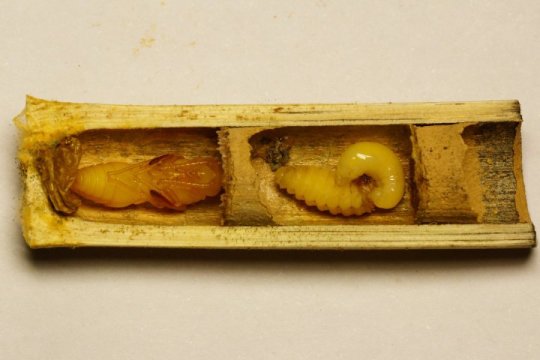Predicting the effects of habitat modification on networks of interacting species
Tuesday, October 10th, 2017. Posted by Owen Lewis.
When humans modify natural ecosystems, how do interactions among species change? New research from our group has found that mathematical models can predict complex changes in insect behaviour using simple descriptions of their feeding preferences.
The research, published in the journal Nature Communications, was able to predict parasitism rates after deforestation without the need for extensive field data.
“Collecting field data is necessary but expensive, so it’s great to show we can use mathematical models to help focus efforts and make data collection more efficient,” commented Dr Phillip Staniczenko, lead author and research fellow at the National Socio-Environmental Synthesis Centre at the University of Maryland, USA.
“Faced with all the complicated relationships among species, and between species and the environment, it’s amazing we can identify simple patterns that, although not perfect, describe how humans might be affecting parasitism in the same way at different places all over the world.”
The international team of researchers set out to see if recorded changes in interactions between parasitic insects and their hosts shared similarities between data sets from different countries. They used data from field sites located in a diverse range of ecosystems in Ecuador, Indonesia, and Switzerland.
The team found that when interaction preferences changed, they did so in the same way in each country. This meant they could design models that captured systematic shifts in interaction preferences to make predictions at new locations, without needing to collect lots of new interaction data.
Co-author Professor Owen Lewis, of Oxford’s Department of Zoology, added, “It would be very difficult and time consuming to study the feeding behaviour of all these species in the field – particularly in high diversity ecosystems like tropical rainforests. Fortunately, it turns out that using interaction preferences might allow us to skip that step.”
Whilst this study focused on deforestation, this new mathematical approach will be valuable for understanding the consequences of many types of human-driven environmental change.
You can read the full paper for free on the Nature Communications web site, or take a look at the press release.


